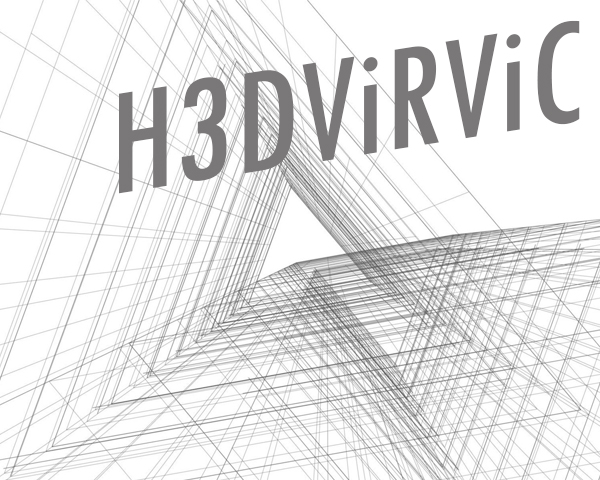
High fidelity 3D Virtual Reality environments and Visual Computation: geometry, movement, interaction and health visualization, architecture and cities
Starting September 2022 — Finishing August 2026
In this project we address different modeling, animation, interaction and visualization problems in Virtual Reality and Visual Computing (VC) with the objective of expanding, improving, facilitating and optimizing VR/VC applications. We target VR applications beyond entertainment, and thus we cover relevant aspects usually missing in mainstream VR applications, such as Immersive Visual Analytics and Collaborative VR. We consider all dimensions around the concept of "high-fidelity" that contribute to the usefulness of the applications as well as user performance and user experience in VR setups: the shape of the represented objects (detail, accuracy, completeness), their appearance (accurate color reproduction), their temporal evolution (e.g. changes due to passage of time), their motion (human motion, avatars of VR users and collaborators), as well as perception, interaction and collaboration aspects that are essential in VC and in collaborative VR setups. As a consequence, the project involves multiple fields such as geometric modeling, appearance modeling, motion capture, motion analysis, motion synthesis and visual computing. The advances in the fidelity of the VR environments we target are conditioned by multiple aspects. The fact that we target VR devices puts multiple constraints on the 3D models, user avatars and interaction techniques. Digital 3D models must be adapted to VR to account for the hardware constraints as well as for the specific interaction techniques used in single-user and collaborative VR. Effective collaboration in VR requires appropriate avatars (with specific representations and animation control) and 3D interaction techniques to harmonize the free exploration capabilities offered by virtual environments with the necessary communication, coordination and interaction awareness between collaborators. The fact that we clearly target VR applications beyond entertainment is substantiated by the explicit inclusion of immersive visual analytics (mainly for complex spatio-temporal data) and the focus on user comfort (essential for the acceptance of VR technologies) and user performance, which involves conducting user and perceptual studies to determine the best visualization and interaction options for different applications. We will also prime the use of real data (geometry, appearance and motion captured from the real world) in contrast to the mostly synthetic environments used in mainstream VR applications. Despite our broad view of high-fidelity for VR environments, and the varied disciplines involved, the specific goals of this project are circumscribed by the application areas the groups have strong expertise with: Health (medical visualization, anatomy education), Sports (biomechanics, sport analytics), Architecture/Industry (collaborative VR), and Cultural Heritage (digitalization, reconstruction, appearance modeling, weathering).
Principal Investigators: Carlos Andújar, Pere Pau Vàzquez.
Financing institution:
Ministerio de Ciéncia e Innovación: Agéncia Estatal De Investigación, FEDER "A way to make Europe "
Grant PID2021-122136OB-C21 funded by MICIU/AEI/10.13039/501100011033 and ERDF/EU
